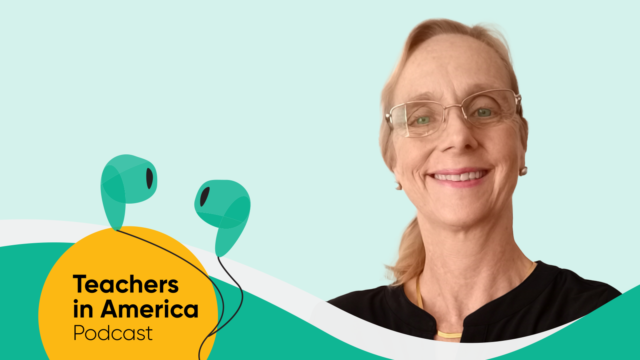
Since we’ve now established a rudimentary understanding of STEM, let me share a bit of what I’ve discovered through my work with international instructors and their diverse student bodies.
Basically, we’re all the same. No surprise there. It seems that most every instructor wants more hands-on activities, and that’s a very good thing! No matter how strictly a teacher may adhere to the 4E Learning Cycle Model, he or she appreciates the intrinsic power of the hands-on experience as a tool to engage, explore, explain, and eventually, evaluate.
That allure of the hands-on experience drives many of my presentations. Whether I’m training trainers for the Dubai Ministry of Education or working with an auditorium of students in Costa Rica, I need to bring out the hands-on “stuff.” Once my audience observes an assortment of workshop materials, smiles instantly replace any sort of trepidation concerning the nature of the ensuing interaction. They infer that even if there are language challenges, a good deal of this learning will be visceral, let alone fun. I mean, who doesn’t like to play? Plus, there’s no better way to shatter that fourth wall which separates teacher from student than moving the engaging and meaningful experience into the hands of your audience!
Integrating Local Phenomena Into a STEM Curriculum
As mentioned previously, learning needs to connect to the students’ lives. That means that whenever possible, examples should be profiled from their immediate or regional surroundings. Decades ago, when I was working as an educational consultant in Jordan, I was always surprised to discover how many examples of phenomena that were specific to the U.S. were profiled in the Arab learning experience. Although there were plenty of local and Middle Eastern examples, teachers weren’t considering them as viable teaching connections. One of my directives from the World Bank was to change that, and we did.
Thankfully, thinking advances. Nowadays, there is an increased appreciation of the diversity and celebration of what each individual (or country) brings to the table. That shift has resulted in an increased emphasis in integrating local phenomena into the learning experience. No longer does a universal concept reside solely in a distant and unfamiliar landscape. Now, it needs to be framed within the real, local, and immediate world of the student.
An Example: Teaching in China
Let me offer an example. Several years ago, I was presenting STEM workshops in China. One of the activities involved an engineering challenge in which participants designed and constructed a spinning turbine, commonly called a waterwheel. Using pieces of pasta, waterproof clay, and a paper clip, the attendees engaged the engineering design process as they learned about the transformation of energy.
To introduce this experience, I began by presenting the historic use of horizontal waterwheels In China. Attendees analyzed pen and ink illustrations from the 14th century to learn how horizontal waterwheels were used to drive metallurgical bellows. Following this introduction, we reviewed the performance expectations of the engineering design process they were to follow. Then, working in teams, the attendees were allowed ample time to design, build, and refine a waterwheel design.
Once the attendees had optimized their design solution, the concept of energy transformation was then applied to contemporary hydroelectric power generation. As a further connection, I introduced the software program Google Earth Pro and its ability to produce custom movies. To demonstrate the program’s capability, I shared a movie I had produced for this audience. It was an eye-in-the-sky vantage that “flew” teachers from our workshop room in Shanghai to the headwaters of the Yangtze River to the engineered spillways of China’s Three Gorges Dam.
As you can see, the above example not only profiles local applications of a global concept but also illustrates the holistic approach that’s essential to effective STEM instruction. To break it down in concrete steps:
- The multidisciplinary methodology begins with a history connection.
- Then, attendees apply higher-level thinking skills to extract information from a diagram.
- It then evolves into a hands-on activity in which the teachers engage in the basic tenets of the engineering design process.
- At its conclusion, the lesson returns once again to a regional connection.
The views expressed in this article are those of the author and do not necessarily represent those of HMH.
***
Learn how to bring STEM to any lesson by checking out our International STEM Academy Professional Learning Courses, available for educators outside the U.S.
Related Reading
















